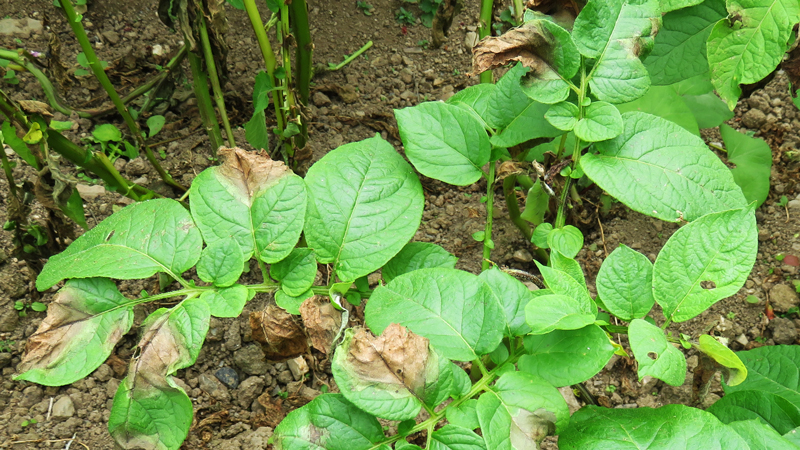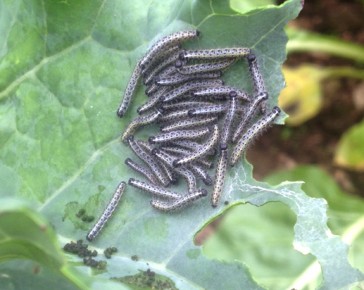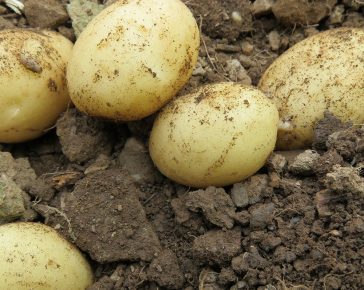What does blight look like on potatoes?
Check your potato plants regularly for the following symptoms on the plants.
- Brown patches appearing on leaves, often starting at the tips (as pictured) and soon spreading across the entire leaf
- Dark brown (almost black) bruise-like patches on the stems
- Leaves beginning to wither and then rot.
How to deal with blight
By checking regularly and acting at first sign of infection you might be able to save your crop. Remove affected foliage and get rid of it (burning it is best). Then, try removing a few more of the leaves to allow air to circulate better between plants. Keep an eye on things and with any luck you may have got it under control before it got too bad!
If the crop is badly affected – if most of the leaves and stems have been affected – then it is best to cut off ALL the foliage at the base of the stems. Again, try and burn it or get rid of it in another way. You can leave the potato tubers in the ground for two weeks to let the potato skins harden and then dig them up.
How can I prevent potato blight?
Spacing is important for airflow to prevent blight from spreading, so make sure you plant your potatoes with plenty of space next year. Remove any yellowing/dying foliage as you see it to prevent things from started. Try blight-resistant varieties too (like Orla). Another really important factor is making sure the plants are healthy so that they can better fend off any fungal diseases like blight – this is done by ensuring they have enough water and nutrients. Regular watering, and digging in plenty of organic matter when you plant will help with this.




